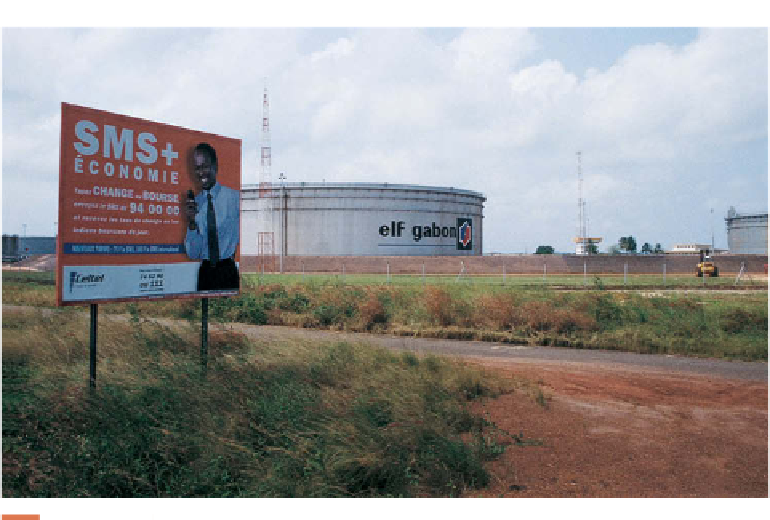Geography Reference
In-Depth Information
Field Note
“Before the 1970s, Gabon's principal exports were
manganese, hardwoods, and uranium ores. The
discovery of oil off the Gabonese coast changed
all that. This oil storage tank at the edge of Port
Gentil is but one r e minder of a development
that has transformed Gabon's major port city—
and the economy of the country as a whole. Oil
now accounts for 80 percent of Gabon's export
earnings, and that fi gure is climbing as oil prices
rise and new discoveries are made. But how much
the average citizen of Gabon is benefi ting from
the oil economy remains an open question. Even
as health care and infrastructure needs remain
unmet, the French public a tion
L'Autre Afrique
listed Gabon's recently deceased ruler as the
African leader with the largest real estate hold-
ings in Pa r is.”
Figure 10.16
Port Gentile, Gabon.
© Alexander B. Murphy.
try to improve the plight of people.
Nongovernmental
organizations (NGOs)
are not run by state or local gov-
ernments. Rather, NGOs operate independently, and the
term is usually reserved for entities that operate as non-
profi ts. Thousands of NGOs operate in the world today,
from churches to charities such as Heifer International.
Each NGO has its own set of goals, depending on the pri-
mary concerns outlined by its founders and fi nanciers.
Some countries have so many NGOs operating
within them that they serve as what the
Economist
calls “a
parallel state, fi nanced by foreigners and accountable to
nobody.” For example, more than 20,000 NGOs operate
within the country of Bangladesh at any time, focusing
mainly on the rural areas and villages of the state. But the
NGO phenomenon can be a bit of a mirage, masking the
depth of problems some places face. In the wake of the 2010
earthquake in Haiti, one respected British newspaper, the
Guardian
, reported that there was approximately 1 NGO
per 1000 people in Haiti, but that much of the money fun-
neled through these NGOs was misappropriated.
One particular kind of program by NGOs that has
found success in South Asia and South America is the
microcredit program. The idea behind a
microcredit
program
is simple: give loans to poor people, particularly
women, to encourage development of small businesses.
Programs either have women in the village guarantee
each other's credit, or they make future lending to oth-
ers contingent on repayment by the fi rst borrowers. With
repayment rates hovering at 98 percent, microcredit pro-
grams can fi nance themselves, and many NGOs offer the
programs (Fig. 10.17).
By providing microcredit to women, NGOs can alter
the gender balance in a region, giving more fi scal power
to women. Some microcredit programs are credited with
lowering birth rates in parts of developing countries and
altering the social fabric of cultures by diminishing men's
positions of power. Successful microcredit programs also
help alleviate malnourishment, as women with incomes
can feed themselves and their children.
Microcredit programs have been less successful in
places with high mortality rates from diseases such as AIDS.
If the borrower is unable to work or if the family has medical
and funeral bills, the borrower is much more likely to default
on the microcredit loan. When people in the periphery of
the periphery (the poorest regions of peripheral countries)
experience a multitude of challenges, such as disease, cor-
rupt governments, high mortality rates, high fertility rates,
and disruptions from natural hazards, the goal of economic
development takes a backseat to daily survival.
Find something in your house (an item of clothing, an elec-
tronic device, etc.) and, using the Internet, try to trace the
commodity chain of production. What steps did the item
and its components go through before reaching you?
Consider the types of economic processes that were oper-
ating at each step and consider the roles governments and
international political regimes played along the way.












































